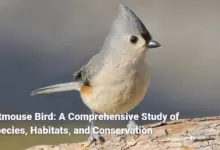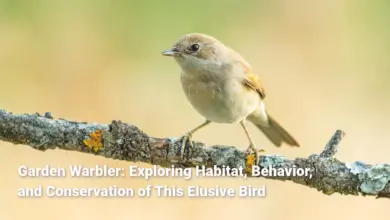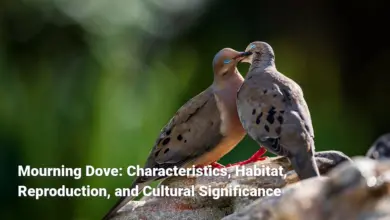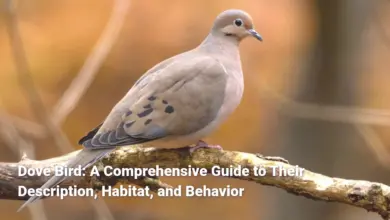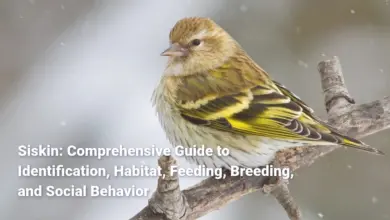Northern Flicker: A Comprehensive Study of Habitat, Behavior, and Conservation
Northern Flicker: An In-Depth Look
The Northern Flicker (Colaptes auratus) stands out among woodpeckers with its unique appearance and behavior. This fascinating bird, found across North America, adds vibrant colors and delightful sounds to our backyards and woodlands. Flickers are not your typical tree-clinging woodpeckers; they exhibit ground-foraging habits that set them apart. Unlike their cousins that peck away on high boughs, flickers are often seen scuttling across the ground, wearing their distinctive plumage that features a melodious blend of browns, blacks, and splashes of bright colors. Understanding the Northern Flicker involves delving into its habitat, migratory patterns, physical characteristics, behavior, and, importantly, its role in the ecosystem.
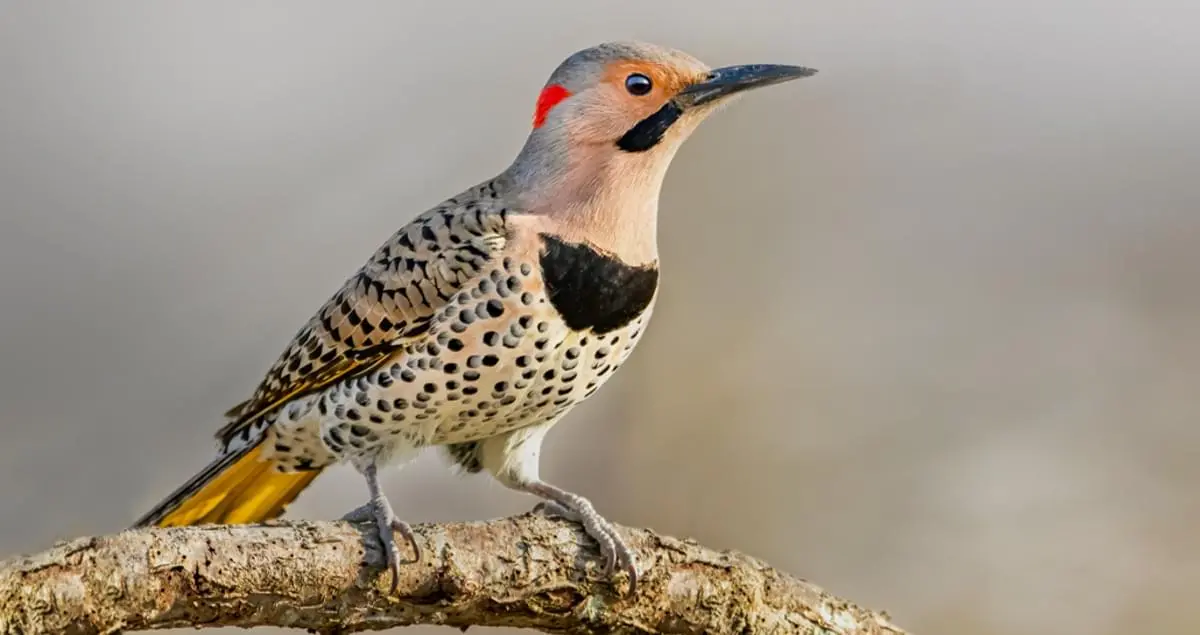
This article aims to explore various aspects of the Northern Flicker, highlighting its preferred habitats and expansive range, as well as its distinctive physical traits. We will also look into feeding habits, social behaviors, breeding patterns, conservation status, and its vital role in promoting biodiversity. With a combined approach of rich descriptions and factual data, we bring the world of the Northern Flicker to life, allowing readers to understand and appreciate these vibrant woodpeckers.
Habitat and Distribution
The habitat preferences and distribution of the Northern Flicker reveal much about its adaptability and ecological niche. From city parks to expansive woodlands, flickers can thrive in various environments as long as trees are part of the landscape. Imagine Northern Flickers as skilled urbanites navigating their way through forests, suburbs, and wetlands – a versatile bird with a knack for flourishing in diverse settings.
Preferred Habitats:
- Forests: Flickers inhabit a variety of forests but thrive best in open woodlands. Dense, unbroken forests are avoided; they favor habitats that facilitate easy ground access for foraging.
- Suburban Areas: These woodpeckers have adapted well to suburban landscapes, often found in backyards with mature trees.
- Riparian Zones: Areas adjacent to rivers and streams provide necessary resources for hunting and nesting, offering a rich environment for both.
- Urban Settings: Northern Flickers have shown remarkable adaptability; they can be seen frequenting urban parks rich in flora.
Distribution Overview:
- North America: Flickers are widespread throughout the continental United States and Canada. Their year-round presence is noted predominantly in the southern states. In northern regions, they migrate seasonally.
- Canada and Beyond: The species breeds across much of Canada, reaching from the western coast of British Columbia to the eastern shores of Nova Scotia. They have also been spotted as far south as Central America, including parts of Mexico and Nicaragua.
The Northern Flicker’s ability to find suitable habitats has enabled its continued success as a species. The adaptability to both urban and natural environments speaks volumes about their resilience and ecological significance.
Preferred Habitats of Northern Flickers
When considering the preferred habitats of the Northern Flicker, one cannot overlook the intricate relationship these birds have with their environment. Flickers are fascinating in how they choose their nesting and foraging sites, often guided by specific environmental conditions.
- Open Woodlands: These birds thrive in wooded areas where trees are interspersed with clearings. Their preference for open spaces allows them to forage for food while maintaining easy access to nesting sites.
- Habitats with Ground Coverage: Flickers favor spaces where grasses or wildflowers abound, giving them areas to hunt for insects. Their mode of foraging is quintessentially different from other woodpeckers, and this is reflected in their habitat requirements.
- Urban Gardens: As urban areas grow, so too does the Flicker’s prevalence in these regions. They can adapt surprisingly well to backyards furnished with bird feeders and nesting opportunities, attracting them to human-dominated environments.
- Mature Trees: Nesting sites are crucial for Flickers, who prefer trees that are at least 25 years old and contain soft wood for easy excavation. Nesting in dead snags further adds to their functionality, supporting the habitat’s ecological balance.
The Northern Flicker’s preference for certain habitats underlines its bipartite lifestyle thriving in urban settings while keeping its roots in nature. These habitats support a diverse ecosystem where Flickers play an integral role.
Geographic Range Across North America
The Northern Flicker’s vast geographic range across North America is a testament to its adaptability. This bird is not confined to any single area or habitat but spreads across diverse terrains, painting a vivid picture of resilience and ecological versatility.
- Yellow-Shafted Flicker: Predominantly found in the eastern part of North America, this variant migrates southward during the winter months. The migration route often sees them journey through the Appalachian region, heading to warmer southern climates.
- Red-Shafted Flicker: In stark contrast, the Red-Shafted Flicker is habitually seen in the western regions, with lesser migratory behavior. These birds often remain at lower elevations through winter, capitalizing on the availability of food sources.
Geographic Distribution Chart:
| Region | Yellow-Shafted Flicker | Red-Shafted Flicker |
|---|---|---|
| East Coast | Common | Rare |
| Western United States | Rare | Common |
| Northern Breeding Area | Migratory (Canada and Alaska) | Mostly resident at lower elevations |
| Southern Wintering Area | Resident (Southern U.S.) | Also resident (Widespread) |
This geographic diversity showcases not only the Northern Flicker’s adaptability but also the varying climatic conditions they can withstand. Flickers enrich each habitat they inhabit, providing unique ecological functions across a broad range.
Migration Patterns and Seasonal Behavior
Understanding the migration patterns and seasonal behaviors of the Northern Flicker can shed light on their life cycle and adaptability. These woodpeckers exhibit intriguing behaviors that are closely tied to environmental changes.
- Partial Migration: Unlike many songbirds that undertake long-distance migrations, Northern Flickers are considered partial migrants. Yellow-Shafted Flickers engage in substantial migratory moves, while Red-Shafted Flickers show a more sedentary lifestyle, primarily remaining in their breeding territories.
- Seasonal Ground Foraging: As seasons change, flickers adapt their foraging strategies. During warmer months, they scour for ants and other insects on the ground. In cooler weather, their diet shifts toward berries, seeds, and fruits, demonstrating their omnivorous adaptability.
- Breeding Cycle: The migration plays a crucial role in their reproductive success. Arriving earlier in their breeding habitats allows male flickers to establish territory and attract mates, enhancing their chances of reproductive success.
- Behavioral Adaptations: Their social behavior also changes with the seasons. In winter, they tend to congregate in larger groups, enhancing foraging success, while during the breeding season, they engage in more solitary behaviors, focusing on courtship displays.
The migration patterns of Northern Flickers conjure images of adaptability, showcasing how they navigate challenges presented by seasonal changes, demonstrating survival instincts that have evolved over generations.
Physical Characteristics
Northern Flickers are not just another woodpecker; they are strikingly unique in their physical characteristics. Their size, coloration, and distinguishing features make them easily identifiable among the avian community.
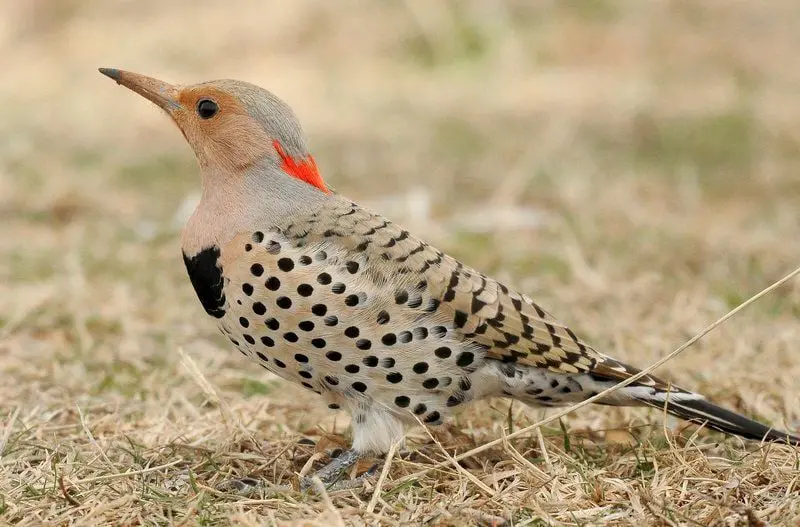
- Medium Size: Flickers typically measure around 28 to 31 cm in length, with a wingspan ranging from 38 to 51 cm. Their medium stature sets them apart from more diminutive woodpeckers.
- Distinct Plumage: Their feathers feature a captivating blend of brown, black, and white, adorned with unique patterns that allow for camouflage during foraging. The iconic black crescent on their chest stands as a hallmark of their identity.
- Rump Patch: One of the most eye-catching features of the Northern Flicker is its bright, white rump patch, which becomes especially prominent during flight and serves as a key identification marker.
- Subspecies Variability: The Yellow-Shafted and Red-Shafted forms exhibit variations in wing coloration, with the former showcasing a yellow underwing and the latter a red underwing. This distinction adds to their allure and makes them an exciting find for birdwatchers.
From physical structure to coloration and subspecies, the Northern Flicker’s characteristics provide insights into their evolutionary success and adaptation to diverse habitats across North America.
Distinctive Plumage and Coloration
Northern Flickers exhibit some of the most striking plumage among woodpeckers. Their coloration and patterns have not only evolved for beauty but also serve functional purposes, aiding in camouflage and mating rituals.
- Color Patterns: Their bodies display a mix of rich browns with black barring across the wings and back. Patterns resembling camouflage allow them to blend seamlessly into their surroundings especially important during foraging or while nesting.
- Vibrant Underwings: The underwings provide a pop of color when flickers take flight. The Yellow-Shafted Flickers showcase a vivid yellow, while the Red-Shafted Flickers display rich red. This differentiation highlights the spectacular beauty of these birds while also aiding in species identification.
- Facial Markings: The Northern Flicker’s face features a gray crown, a striking black “mustache,” and a red nape patch, particularly pronounced in males. These facial markings enhance their expressive communication during the mating season.
- Belly and Chest Features: The stark contrast of the white belly covered with bold black spots and a prominent black crescent adds to their distinctive appearance, making them a sight to behold in any habitat.
Overall, the distinctive plumage and coloration of the Northern Flicker offers a spectrum of beauty that emphasizes its role not only as a forager but also as an engaging participant in woodland ecosystems.
Size and Weight Comparisons
When comparing the size and weight of the Northern Flicker with other woodpeckers, some interesting observations arise. These comparisons highlight the physical traits that define the Northern Flicker, giving it a distinct advantage in its ecological niches.
Size Overview:
- Length: Northern Flickers average between 28 to 31 cm, placing them in the medium-sized category of woodpeckers.
- Weight: They typically weigh between 110 to 160 grams, which, while substantial, is lighter than some of their larger woodpecker counterparts.
Comparison Chart:
| Species | Length (cm) | Weight (grams) |
|---|---|---|
| Northern Flicker | 28-31 | 110-160 |
| Pileated Woodpecker | 40-50 | 280-400 |
| Downy Woodpecker | 14-21 | 30-90 |
| Hairy Woodpecker | 20-25 | 50-80 |
| Red-headed Woodpecker | 22-27 | 56-132 |
Flickers fall squarely in the middle tier of woodpeckers, showcasing a balance between size and weight that suits their foraging behavior. Their robust body structure allows them to adapt to various feeding strategies while maintaining agility in different environments.
Unique Physical Adaptations
The Northern Flicker showcases several unique physical adaptations that not only enhance its survival but also set it apart from its woodpecker relatives. These adaptations emphasize the evolutionary significance of this species in various ecosystems.
- Bill Structure: Flickers have a strong, chisel-like bill designed to probe and excavate for insects hidden under bark and soil, allowing them to reach nests of ants and other insects buried deep in the earth.
- Cranial Protection: The Northern Flicker’s skull is thickened, a crucial adaptation that protects against the impacts incurred during the rigorous pecking behavior common among woodpeckers.
- Toe Configuration: The bird’s toes are long and equipped with sharp, curved nails, facilitating a strong grip on tree bark during climbing and foraging.
- Tail Feather Support: Sturdy tail feathers provide balance and support while navigating vertical surfaces, functioning like an additional limb during climbing or pecking.
These adaptations showcase the Northern Flicker’s unique capabilities, enabling it to exploit different habitats successfully, from dense forests to open fields and even urban settings.
Behavior and Diet
The behavior and diet of the Northern Flicker distinguish it from its woodpecker cousins, revealing a unique approach to survival. Its feeding habits, courtship behaviors, and social structures contribute to its overall adaptability as a species.
- Feeding Habits: Northern Flickers are primarily ground foragers, a behavior rarely seen in woodpeckers. They commonly feed on ants, which make up about 45% of their diet. Their long, barbed tongues help them effectively extract insects from the ground.
- Behavioral Patterns: Flickers engage in drumming, often on metal surfaces like gutters, producing a sound that can be heard across distances. This drumming serves as a form of communication for territory establishment and mate attraction.
- Social Structure: Northern Flickers may be seen foraging alone or in small groups, particularly in areas where food is abundant. During the breeding season, they engage in courtship displays that are visually striking, including head bobbing and loud calls.
- Cavity Nesting: As cavity nesters, they excavate their homes in decaying trees. Their typical clutch size ranges from 7 to 9 eggs, and both parents are actively involved in incubating and caring for the young.
The behavior and dietary habits of the Northern Flicker reflect its adaptability and versatility in various environments, allowing it to thrive successfully across diverse habitats.
Feeding Habits of Northern Flickers
The feeding habits of the Northern Flicker are nifty adaptations that reflect its ecological niche and dietary preferences, contributing to its success in diverse environments.
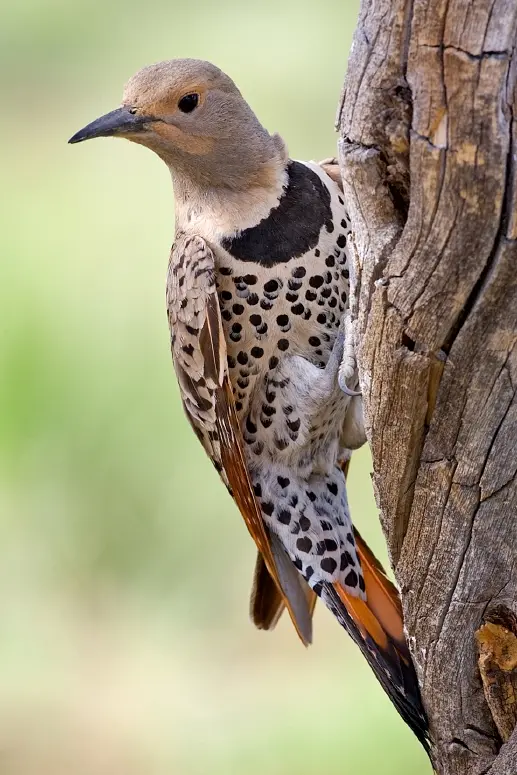
- Insectivorous Diet: Northern Flickers primarily consume insects, with a particular focus on ants. Their long, barbed tongues help to effectively extract ants from the soil, showcasing their specialized feeding technique. They are known to consume:
- Ants: Approximately 45% of their diet during summer months.
- Beetles: A diverse range that contributes to their dietary variety.
- Moths and Caterpillars: Seasonal changes can shift their insect preferences.
- Foraging Techniques: Unlike many woodpeckers, Northern Flickers frequently forage on the ground, often seen probing with their bills to access ants and other insects. They are also adept at hammering the ground to access nutrient-rich hidden food sources.
- Dietary Flexibility: Their diet is not strictly insectivorous, as evidenced by their seasonal behavior. In winter, Northern Flickers shift to consuming berries and seeds, including:
- Wild Black Cherries
- Raspberries
- Sunflower Seeds
- Ecological Impact: By foraging on pests like corn borers, Northern Flickers contribute to agricultural health, helping to manage bug populations that might otherwise harm crops.
The feeding habits of the Northern Flicker underline its adaptability as both an insect eater and a fruit consumer, allowing it to thrive across various habitats.
Foraging Techniques and Food Sources
Northern Flickers utilize diverse foraging techniques tailored to their prey, enhancing their success in gathering food from different environments.
- Ground Foraging: Flickers are known for their distinctive ground foraging, enabling them to hunt for ants and insects hidden within soft soil. They deftly probe the ground with their bills to catch these insects.
- Probing Depth: These birds can alter their probing depth based on the availability of food and soil conditions, often using their strong jaws to dig and access larvae hidden beneath the earth’s surface.
- Nutrient Extraction: Their long, sticky tongues (extending more than 4 cm) are specialized for efficiently gathering food items they discover. This adaptation allows them to forage effectively, demonstrating an impressive feeding skill set.
- Seasonal Dietary Shifts: Northern Flickers adapt their feeding techniques with seasonal changes, foraging for insects during breeding season while foraging for fruits, seeds, and berries during winter months when insects are less available.
By adapting their foraging techniques and remaining versatile in their dietary habits, Northern Flickers demonstrate a remarkable ability to thrive across varied environments, effectively managing their nutritional needs.
Social Behavior and Communication
Northern Flickers are not only adept foragers but also exhibit unique social behavior and communication that enhance their survival and breeding success within diverse habitats.
- Social Structure: During feeding, Northern Flickers may be seen alone or in small groups, often in areas where food is plentiful. Their social dynamics tend to shift with seasons; in winter, they may forage in larger groups, improving their chances of foraging efficiency.
- Vocalizations: Flickers communicate through distinct vocalizations, comprising various calls that establish territory and attract mates. Their calls include sharp “kleer” and “wicka” sounds, which are effective in dense forest environments.
- Courtship Displays: During the breeding season, males perform striking head bobbing while vocalizing, a courtship display meant to attract females and signal territory ownership. Competitive interactions may occur, showcasing their elaborate social dynamics.
- Territorial Aggression: Flickers are known to be assertive defenders of nesting locations, using vocal calls and physical displays to fend off intruding birds. This behavior is particularly notable during the breeding season, where territorial disputes may arise.
The social behavior and communication of Northern Flickers illustrate their complex interactions and adaptability, providing insights into their evolutionary success within diverse environments.
Breeding and Nesting
The breeding and nesting behaviors of the Northern Flicker unfold as a fascinating process marked by intricacies ranging from site preferences to parental care.
- Nesting Sites: Northern Flickers favor nesting in dead or decayed trees, often opting for trees that are soft and easier to excavate. Quaking aspens are a preferred choice due to their softerwood, while oak and pine serve as alternative nesting sites. This preference showcases their reliance on specific habitat structures.
- Excavation Process: Nest excavations typically take about 12 days. The entrance hole of a flicker’s nest measures roughly 3 inches in diameter, while the cavity can reach depths from 13 to 16 inches. Interestingly, Northern Flickers often reuse nests successfully excavated in previous years.
- Egg Laying and Development: Flickers generally lay between 7 to 9 eggs, with females largely responsible for incubation. Both parents share the responsibility of raising the hatchlings, nurturing them until they are ready to leave the nest.
- Parental Investment: Parental care is a vital aspect of flicker breeding cycles, with both parents actively involved in feeding the young. After fledging, the parents may remain present for a few weeks, assisting their chicks as they learn to navigate their surroundings.
These unique characteristics of Northern Flickers’ breeding and nesting behaviors ensure a higher rate of success by providing crucial support for the development of their young.
Nesting Sites and Preferences
The Northern Flicker’s choice of nesting sites and preferences underscores its ecological role and adaptability as a species.
- Cavity Nesting: As cavity nesters, Northern Flickers excavate nesting cavities in a range of tree species. They often choose locations in decaying trees, using their strong bills to drill out spaces suitable for raising their offspring.
- Height Preferences: Flickers tend to nest within 6 to 15 feet above the ground, although they can also adorn nests located higher, even up to 30 meters in towering forests. The height often correlates with the availability of suitable trees and predatory pressures.
- Nest Architecture: Typical Northern Flicker nests feature a concave base filled with wood chips an adaptive behavior that provides insulation and a comfortable environment for the chicks.
- Nesting Habits Across Regions: Flickers are known to return to the same nesting areas each season, preferring sites with a reliable insect food source and effective concealment from predators.
The nesting site preferences of Northern Flickers play a critical role in their reproductive success, revealing their unique adaptations to survive and thrive in a range of environments.
Mating Rituals and Courtship Behavior
The mating rituals of Northern Flickers are characterized by engaging displays and vocalizations that reflect their ecological and behavioral adaptations.
- Courtship Displays: During the breeding season, male Flickers engage in courtship through head-bobbing displays and distinctive vocalizations, which serve to attract females and establish dominance over competing males.
- Drumming Sounds: Drumming remains an essential aspect of their courtship behavior. Flickers often drum on hollow logs or metal objects; the sound resonates at considerable distances, proving effective in sending successful mating calls.
- Excavation Together: Nest excavation is a mutual endeavor, with both partners working on creating the nesting cavity. This behavior speaks to the cooperative nature of their breed and bond.
- Breeding Outcomes: Successful pairings lead to egg-laying, with both partners remaining close to the nesting sites to care for their young and defend them from potential threats.
Northern Flickers’ mating rituals showcase the complexity of their social behaviors, emphasizing the importance of communication and cooperation in ensuring reproductive success. Their antics provide a glimpse into the dynamic ways they navigate their breeding lives.
Chicks Development and Parental Care
Parental care and chick development in Northern Flickers are impressive and reflect their dedication to ensuring the survival of their young.
- Nestling Care: After the eggs hatch, both parents take on the responsibility of feeding the chicks, providing regurgitated insects a critical source of nutrition necessary for their growth. This joint effort emphasizes cooperative breeding behavior, a characteristic important for the species.
- Growth Timeline: Flicker chicks stay in the nest for about 24 to 28 days before fledging, during which time they undergo significant physical development. They are altricial, meaning they are born relatively helpless, relying heavily on their parents for food and warmth.
- Post-Fledging Support: Following fledging, parents may continue to care for their chicks for an additional period, offering protection and guidance as the young flickers learn to forage independently. This extended care is critical in helping chicks navigate their initial days outside of the nest.
- One Brood Per Season: Generally, Northern Flickers raise only one brood per breeding season, leading to concentrated parental investments in their young. This strategy reflects their commitment to ensuring that each chick has the best chance of survival.
Through these behaviors, Northern Flickers demonstrate their role as attentive parents, with developmental patterns that reflect their adaptability and ecological significance in their environments.
Conservation Status
The conservation status of the Northern Flicker is a critical topic in avian protection. Although they are currently not considered at risk, ongoing challenges remain for their populations.
- Status Assessment: Classified as a species of “Least Concern” by the International Union for Conservation of Nature (IUCN), Northern Flicker populations are approximately 9.9 million globally. However, trends suggest a decline in numbers in certain areas.
- Habitat Loss: One of the principal threats to Northern Flickers is habitat loss due to urbanization and changes in land use. As forests are converted into urban or agricultural areas, the removal of dead trees essential for nesting diminishes their breeding success.
- Competition and Mortality: Competition for nesting sites from invasive species, such as the European Starling, poses a significant threat to their population dynamics. Furthermore, urban hazards like collisions with buildings and predation by domestic cats adversely impact their numbers.
- Food Availability: Changes in food availability due to urbanization also affect flicker health, as insects and other food sources may become scarce. Disruption of their dietary supply contributes to the decline in their populations.
While Northern Flickers currently maintain a stable status, understanding the ongoing issues and implementing conservation efforts is essential to safeguard their future.
Threats to Northern Flicker Populations
Threats to Northern Flicker populations derive from a mix of environmental factors and human actions reflecting the need for ongoing conservation efforts to ensure their future.
- Habitat Degradation: As urbanization continues, the removal of old-growth trees which are critical for nesting presents a considerable concern. Flickers depend on the availability of dead trees for successful breeding, and habitat loss drastically reduces their reproductive success.
- Invasive Species: The aggressive behavior of invasive species, notably the European Starling, threatens Northern Flickers by outcompeting them for crucial nesting sites. This added pressure can lead to lower reproductive outputs, impacting overall population health.
- Human Factors: In urban and suburban areas, Northern Flickers face threats from vehicle collisions, building strikes, and predation by free-roaming domestic cats. These human-related risks have dire consequences, particularly in regions where Flickers explore foraging grounds.
- Food Source Changes: Habitat alteration often leads to shifts in the availability of prey species. With the reduction of certain insects, Flickers may face challenges sustaining their dietary needs, which can impact their health and reproductive potential.
Awareness of these threats is key to developing conservation strategies aimed at protecting the Northern Flicker populations and ensuring their long-term survival in North American ecosystems.
Conservation Efforts and Success Stories
Conservation efforts for the Northern Flicker have garnered focus as highlighted initiatives seek to mitigate threats faced by this woodpecker species and preserve its ecological role.
- Community Engagement: Conservation organizations are actively engaging local communities about the importance of maintaining natural habitats. By educating residents on the significance of having dead trees and woodpecker-friendly spaces, they can contribute to sustainable environments capable of supporting flicker populations.
- Planting Initiatives: Efforts directed toward planting indigenous trees and preserving mature tree canopy spaces aim to provide essential nesting grounds. Restoration of riparian zones and forests can benefit flickers and other avian species.
- Monitoring Projects: Monitoring programs that track Northern Flicker populations allow for assessing trends and making data-driven decisions. These programs involve citizen science efforts where birdwatchers contribute to tracking sightings and nesting behaviors.
- Collaborative Partnerships: Partnerships with government entities and land management organizations have forged collaborative approaches to enhance habitat, set management practices, and create protected areas ensuring the safety of crucial nesting sites.
While conservation challenges remain, renewed focus and collaborative efforts showcase promising strides toward preserving Northern Flicker populations, highlighting the importance of community involvement and awareness in conservation efforts.
Role in Ecosystems and Impact on Biodiversity
Northern Flickers play a pivotal role in ecosystems across North America, impacting biodiversity in significant ways.
- Keystone Species: As primary predators of ants and other insects, Flickers help control insect populations critical for maintaining ecological balance and supporting a healthy environment.
- Nesting Cavity Providers: The flickers’ nesting habits create cavities that serve as habitats for other cavity-nesting species such as owls, chickadees, and bluebirds. This leans into the ecology by ensuring a symbiotic association with diverse wildlife and enhancing overall biodiversity.
- Soil Health Figure: By foraging and turning the soil in search of insects, Northern Flickers contribute to soil aeration and health. This behavior benefits vegetation by improving nutrient availability and promoting plant growth.
- Urban biodiversity: The adaptability of Northern Flickers to urban environments illustrates their significance in fostering biodiversity within cityscapes. Their presence enriches urban avian communities, promoting interactions with residents who learn to appreciate the wildlife around them.
The Northern Flicker’s role within ecosystems directly affects biodiversity and species interactions in both natural and urban habitats. It emphasizes the importance of conservation efforts that seek not only to protect flickers but also the broader community of life they support.
In conclusion, the Northern Flicker serves as both a symbol of resilience and a vital component of ecological networks across its wide-ranging habitat. As we seek to understand and safeguard this captivating species, it is essential to reaffirm our commitment to conservation efforts, recognizing them as part of our shared responsibility to maintain and support the natural world. This in-depth exploration seeks to inspire awareness and appreciation for the Northern Flicker, encouraging all to contribute towards creating sustainable environments where these remarkable birds can thrive.




